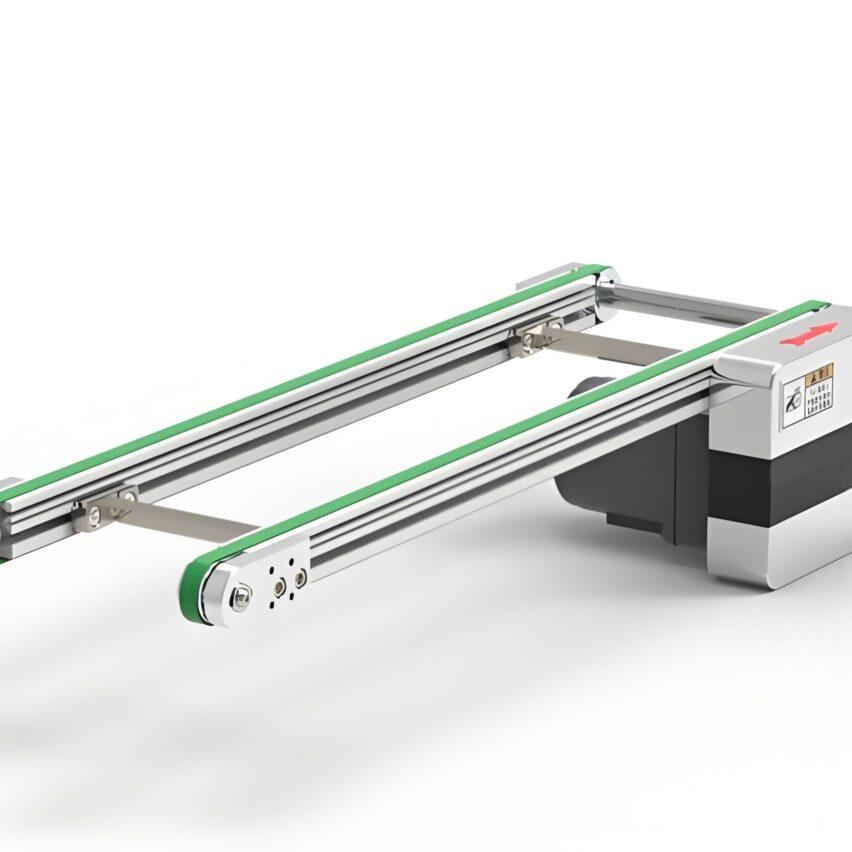The essential difference between frictional resistance and transmission efficiency
Why does a belt conveyor save electricity over a chain conveyor for the same load weight 30%?The key is toSignificant differences in friction coefficient μ and transmission efficiency ηBelt conveying relies on the rolling friction between the belt and the rollers. Belt conveying relies on the rolling friction between belt and roller, the resistance coefficient is only 0.02~0.05, the transmission efficiency is as high as 0.8~0.9; while chain conveying needs to overcome the chain link meshing resistance, the friction coefficient is as high as 0.1~0.15, and the transmission efficiency is reduced to 0.75~0.85. Take the conveying of 400kg of material as an example:
- Belt line power: μ takes 0.03, η takes 0.85 → P=(0.03×400×9.8×0.5)/(1000×0.85)≈0.07kW
- Chain line power: μ takes 0.12, η takes 0.8 → P=(0.12×400×9.8×0.5)/(1000×0.8)≈0.29kW
Chain conveying power requirements are more than 4 times that of belt conveyingThis is the primary focus of the selection process.
Comparative analysis of power calculation models
What is the difference between the power formulas for the two types of conveyor lines?Belt conveying requires only the basic power formula, whereas chain conveying requires an additional check of the chain tension:
Belt Conveyor Core Formula::
P = [μ-M-g-cosα + M-g-sinα] × v / (1000 × η) × S
(α: inclination; S: safety factor 1.5 to 2.0)
Chain conveyor supplement formula::
Chain tension T = (P x 1000) / (v x η)
(T value directly determines the selection of chain tensile strength)
Case: Chain line with a drive power of 1.5 kW (v = 0.3 m/s, η = 0.8)
T = (1.5 x 1000)/(0.3 x 0.8) = 6250N
This tension value should be matched with roller chains with breaking strength ≥ 10000N (safety factor 1.6).
Comparison of strategies for motor type selection
When must I choose a variable frequency motor?There is a fundamental difference between the two types of conveyor lines:
| take | belt conveyor | chain conveyor |
|---|---|---|
| Long distance transport (>50 metres) | Mandatory inverter motor to prevent start-up slip | Optional normal motor |
| heavy load startup (computing) | A soft start will do. | Permanent magnet synchronous motor required (torque overload capacity 200%) |
| High temperature environment (>60℃) | No special protection required | Insulation class F motors required |
| Belt conveyors with an inclination angle of >15° must be selected.Anti-slip brake motorChain conveyors are used in frequent start/stop conditions.20~30% Torque margin. |
Practical points of safety factors and environmental corrections
Why the same formula selection results still burn the motor?Safety factor S and environmental corrections are ignored as the main cause::
- Logic of the value of the safety factor
- Belt conveyor: S=1.5 (continuous operation) ~ 2.0 (including frequent start-stop)
- Chain conveyor: S=1.8 (light load) ~ 2.5 (heavy impact)
- Environmental correction factor
prerequisite Belt Conveyor Correction Chain Conveyor Amendment Altitude > 1000 metres ×1.05 ×1.1 dust environment ×1.1 ×1.15 Humidity >80% ×1.05 ×x 1.2 (rustproof)
Case: chain line with a theoretical power of 22kW for a mine at 1500 metres above sea level
Ppractice
= 22 x 1.8 (safety factor) x 1.1 (altitude) ≈ 43.56kW
Requires 45kW motor instead of 30kW.
Quadruple Insurance for Selection Verification
True reliability never relies on a single formula:
① Theoretical calculations: Initial calculations completed in accordance with the above differentiation formula
② Inertia Calibration: Chain conveyor to be checked J-β Acceleration torque (β = Δω/t)
③ Brand Manual Comparison: Comparison of load torque curves from SEW, Shingo, etc.
④ Measured current method: No-load current <30% rating, load current <85% rating
Those unforeseen chain stalls and belt run-outs will eventually show up in the current fluctuations-The end of the selection process is always the actual data measured in the field..













